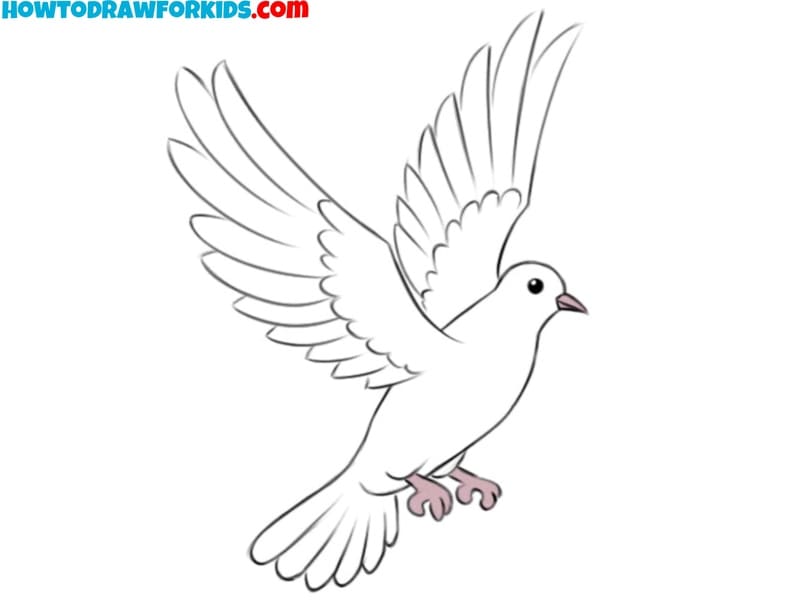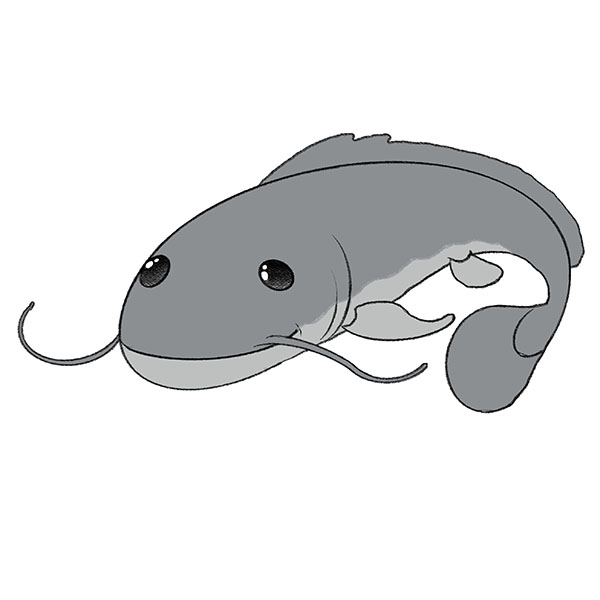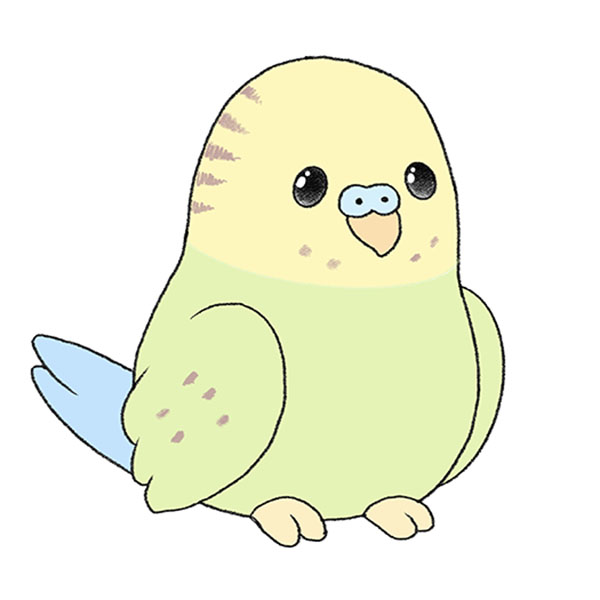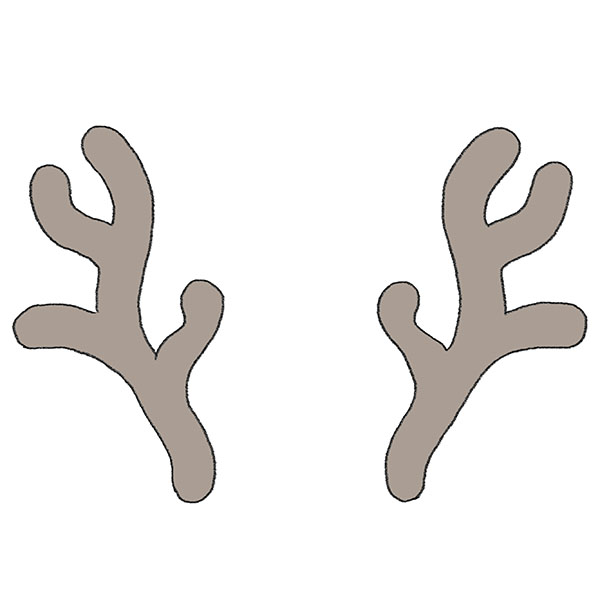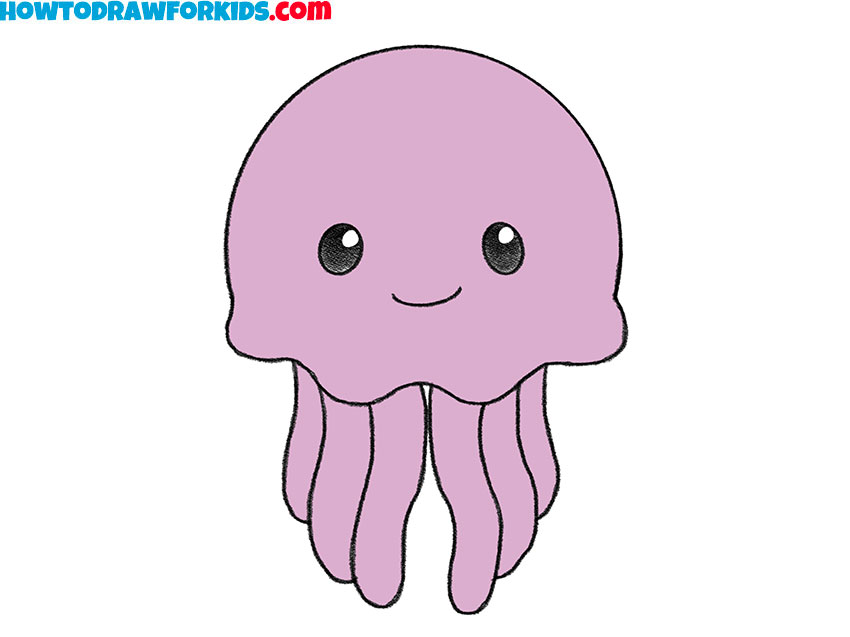How to Draw a Labrador
In this drawing guide, I will illustrate and explain how to draw a Labrador. While capturing the unique features of any dog breed can be challenging, I have crafted this guide to be as simple and accessible as possible.
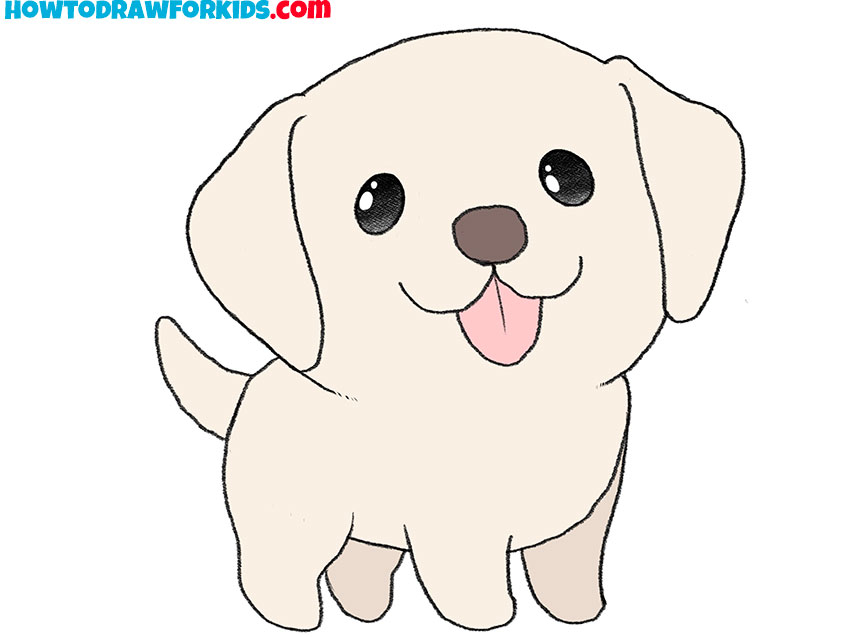
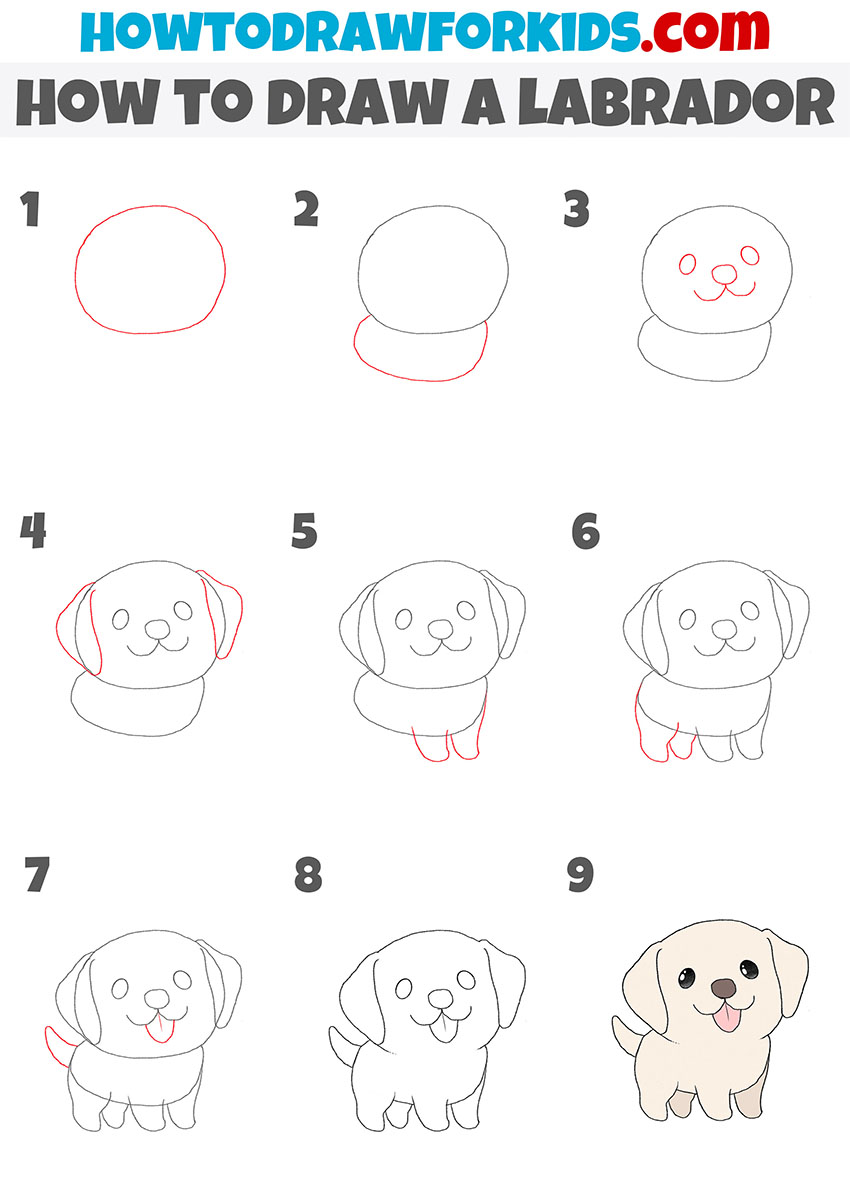
How to Draw a Labrador: Basic Information
Welcome to this Labrador drawing lesson. In this guide, we will focus on drawing a Labrador puppy, paying particular attention to the structural features that define this beloved breed. Labradors are known for their broad heads, expressive eyes, and muscular builds, even as puppies. By observing these characteristics, you will learn to capture the essence of a Labrador in a simplified, cartoonish style.
Drawing animals, especially baby animals, is an excellent exercise for artists of all levels. It allows you to practice breaking down complex forms into basic shapes, which is a fundamental skill in art. By focusing on simple shapes, such as circles and ovals, you can create a solid foundation for more detailed and refined drawings.
Working with simple shapes helps artists develop a strong sense of proportion and balance. When drawing a Labrador puppy, you will see how these basic forms can be combined and adjusted to create a lifelike and appealing character. So, this process not only enhances your technical skills but also your ability to observe and replicate the world around you.
Moreover, creating high-quality art through the practice of drawing animals builds confidence and creativity. As you progress through this lesson, you will gain a deeper understanding of the techniques used to bring your drawings to life. This foundational knowledge is crucial for any artist looking to improve their craft and expand their artistic capabilities.
Labrador Drawing Tutorial
Materials
- Pencil
- Paper
- Eraser
- Coloring supplies
Time needed: 30 minutes
How to Draw a Labrador
- Draw the head.
start by drawing an oval shape to form the head of the Labrador. This oval should be slightly wider at the bottom, giving a rounded look typical of a cute, cartoonish style. It’s important to keep your lines light and smooth, allowing for easy adjustments as you refine your drawing.

- Sketch out the torso.
Next, draw a second, smaller oval overlapping the bottom of the first oval to create the body. The bottom oval should be centered and extend slightly below the main head shape. Keep your lines gentle and maintain the simplicity that characterizes a cartoon drawing.
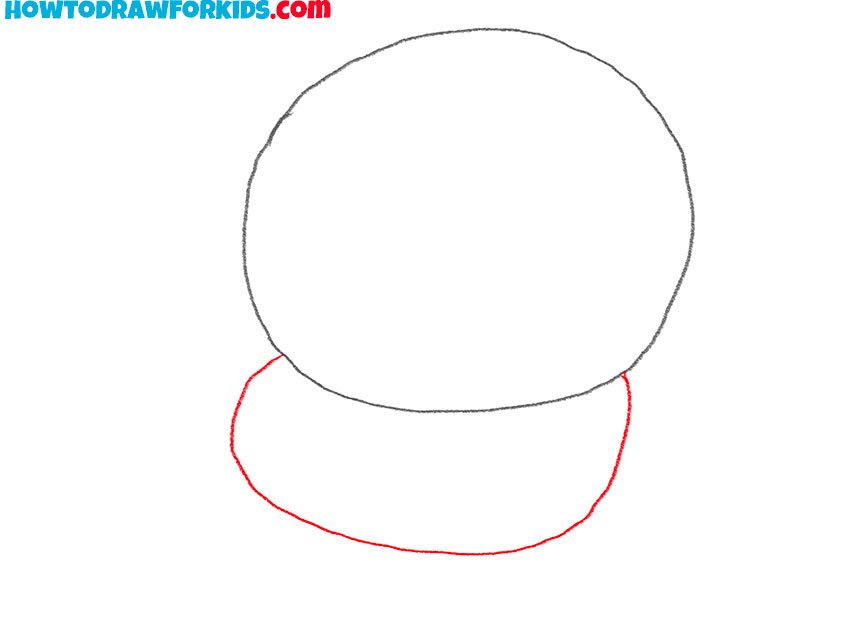
- Add elements of the face.
In this step, add the facial features by drawing two small circles for the eyes and a smaller circle for the nose within the muzzle area. Between the nose and the bottom of the muzzle, draw a small smiling mouth. The eyes are particularly important in cartoon drawings as they often convey the character’s emotions.
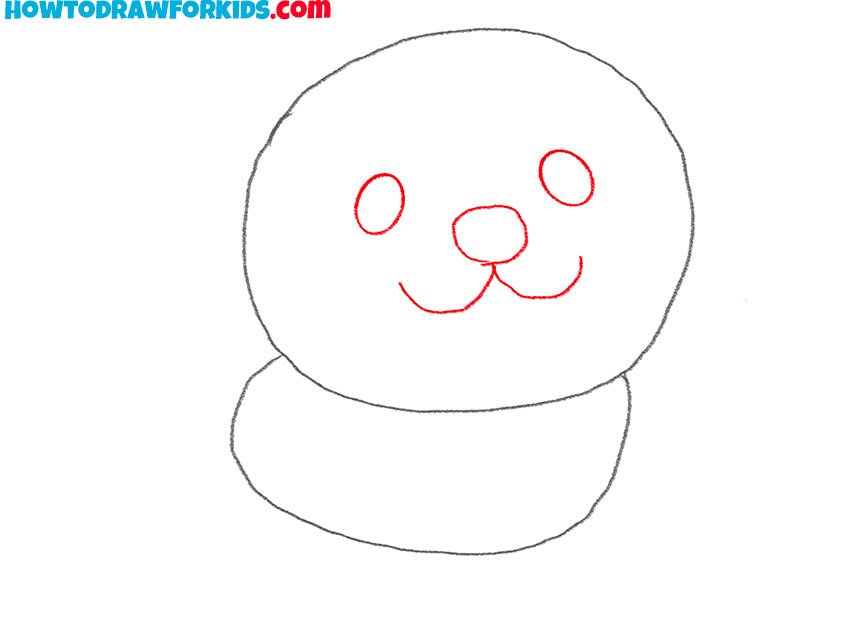
- Depict the ears.
Now, add the ears by drawing two curved shapes on either side of the head. These shapes should droop slightly downwards, mimicking the natural look of a Labrador’s ears. Again, keep the lines soft and rounded to maintain the cartoonish style.

- Sketch out the front paws.
Next, draw the front legs by sketching two elongated oval shapes beneath the head and muzzle. These ovals should be positioned slightly apart to represent the Labrador’s stance. The legs should taper slightly towards the bottom.
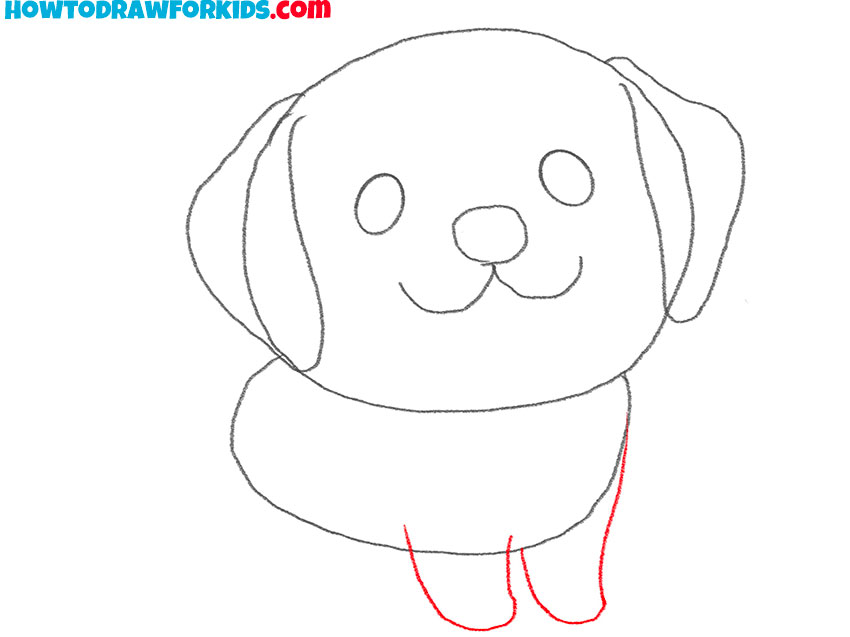
- Draw the hind paws.
Add the back legs by drawing two more elongated ovals, slightly larger than the front legs, positioned behind the front legs. Perspective makes the closest limb look larger. Also, due to the peculiarities of the angle, the upper part of the far limb is hidden.
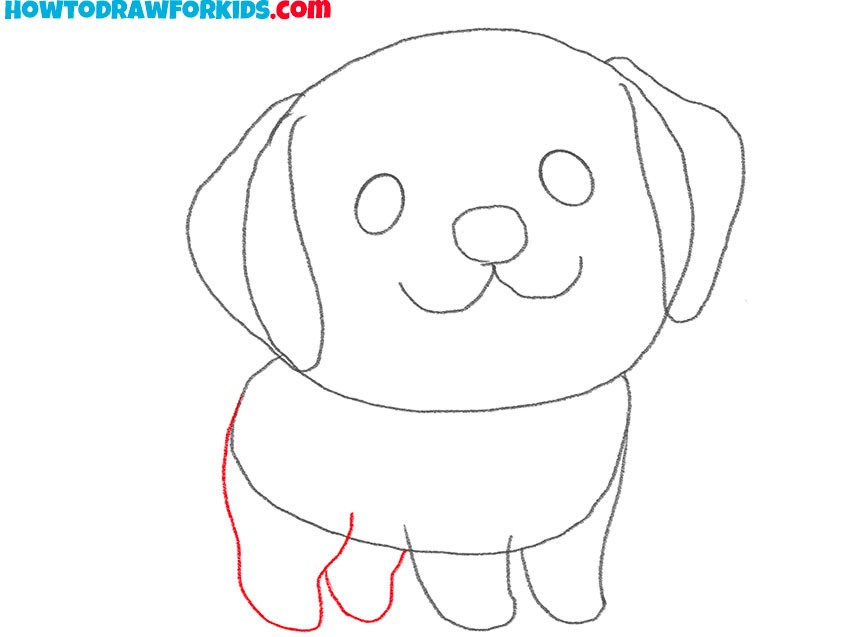
- Depict the tongue and tail.
In this step, draw the tail by sketching a curved line that extends from the back of the body. The tail should be slightly curved upwards, giving it a playful and lively appearance. Keep the tail’s shape simple and slightly tapered towards the tip.
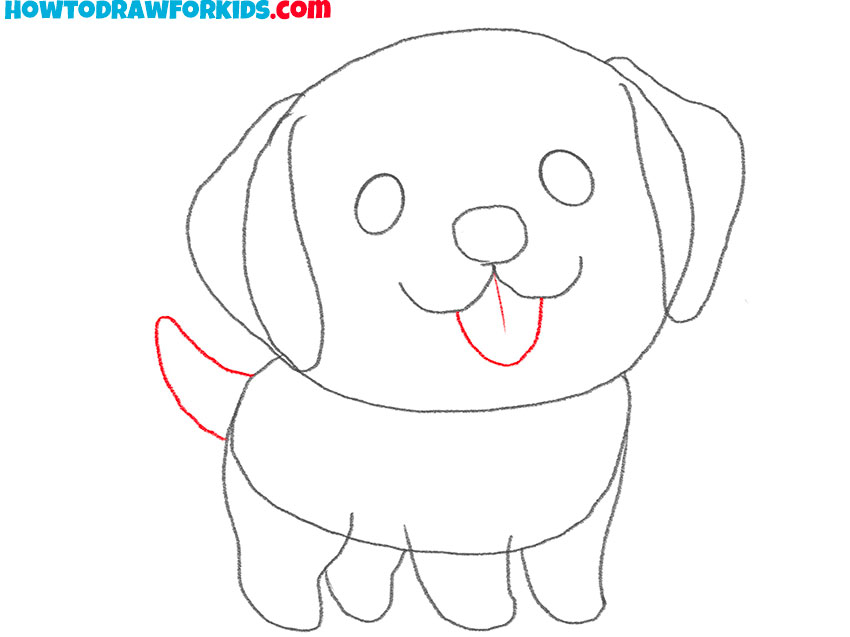
- Correct inaccuracies.
Now, refine the body by connecting the legs and tail with smooth, rounded lines, and remove any extra lines from previous steps. Carefully erase any unnecessary guidelines or overlapping lines to clean up your drawing and give it a polished look. This is almost the final of this guide on how to draw a Labrador.

- Color the Labrador.
Add color to your drawing to bring your Labrador to life. Use light brown or beige for the fur, dark brown for the nose and eyes, and pink for the tongue. Adding color enhances the overall appeal and gives your cartoon Labrador a finished look.

Additional Content
At the end of this drawing lesson, I’d like to mention that there is a PDF file available with a concise version of the drawing guide, as well as two additional versions. This PDF is both informative and convenient, allowing you to continue your drawing practice even when you are offline. It’s a handy resource to have on hand for whenever creativity strikes.
Labrador Drawing: Art Project Ideas
Personalized Greeting Cards: Use your drawing of a Labrador to create personalized greeting cards for birthdays, holidays, or thank-you notes. Scan and print your artwork onto card stock, and add a personal message for a unique touch.
Children’s Storybook: Incorporate your Labrador drawing into a children’s storybook. So, create a simple narrative featuring the Labrador as the main character, and illustrate each page with variations of your drawing to tell the story.
Wall Art: Turn your Labrador drawing into wall art. Frame your artwork and create a series of drawings featuring different poses or scenes with the Labrador to decorate a child’s room or a pet-friendly space.
Conclusion
For beginning artists, regular practice in drawing animals is essential. It helps to improve observation skills, understanding of proportions, and ability to simplify complex forms. Remember, the more you practice, the better your drawings will become. Be sure to explore my website’s category on drawing animals for more tutorials to enhance your skills.
I also encourage you to subscribe to the social networks to stay updated with new lessons and tips. Keep practicing, and happy drawing!

